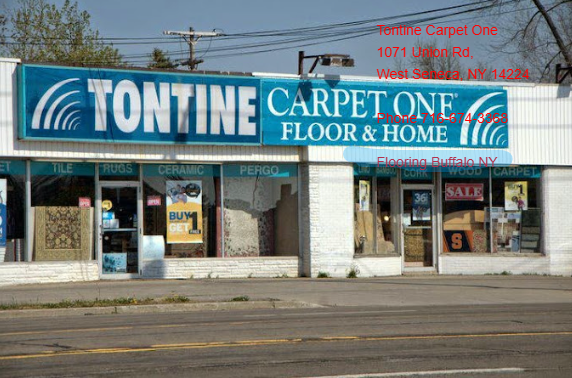Introduction
When we walk via a superbly decorated dwelling, our eyes continuously fall upon the carpeting that serves as either a foundation and a announcement piece. Carpets can carry spaces, delivering heat, comfort, and a classy enchantment. But have you ever ever questioned how carpet styles evolved over the years? From expensive Persian rugs to trendy minimalist designs, the journey of carpeting styles displays societal adjustments, technological improvements, and evolving tastes.
In this newsletter, we’ll discover The Evolution of Carpeting Styles Over the Years in aspect. We'll delve into old context, components used, layout traits, and contemporary improvements inside the carpet enterprise. Whether you're hunting for carpets Buffalo NY, Hardwood Flooring Buffalo NY, or surely exploring recommendations at your native Buffalo Carpet Store, this newsletter will provide insights into how carpets have converted over time.
The Evolution of Carpeting Styles Over the Years
A Brief History of Carpeting
Carpeting has a wealthy heritage relationship again 1000's of years. Initially created for useful applications, carpets evolved into ornamental paintings types that reflected cultural values and improvements.
Early Beginnings: The Origin of Rugs
- Persian Influence: Persian rugs are a number of the oldest wide-spread carpets, courting to come back to round 500 BC. Their elaborate designs sometimes function floral motifs and geometric patterns. Navajo Weaving: In North America, Native American tribes like the Navajo all started weaving their very own unusual rugs as early as the 17th century.
These early carpets had been now not simply realistic yet also served as status symbols within their respective cultures.
The Middle Ages: A Shift in Functionality
As societies developed all through the Middle Ages, carpets transitioned from being simply utilitarian to serving as ornamental points in castles and churches across Europe. The use of prosperous colorations and problematic designs became well-known.
Renaissance to Industrial Revolution: The Rise of Luxury Carpets
Renaissance Flourishes
During the Renaissance duration (14th to 17th centuries), European royalty commissioned incredible tapestries and carpets for his or her residences. These textiles featured bright colorations and depicted scenes from mythology or nature.
Industrial Innovations
The Industrial Revolution within the 18th century marked a very good turning point for carpeting types:
- Mass Production: With developments in machinery, carpets might be produced on a larger scale. Synthetic Fibers: The creation of man made fibers provided toughness at reduce costs.
20th Century: Diverse Styles Emerge
As we entered the twentieth century, carpeting started out to diversify similarly:
Mid-Century Modern Designs
The mid-century today's stream emphasized simplicity and functionality. Carpets consisting of shag rugs turned general because of the their textural qualities.
Post-War Era Trends
After World War II, there has been a surge in suburban dwelling which motivated carpet design:
- Wall-to-wall carpeting grew to become a staple in many properties. Bright colours like avocado inexperienced and mustard yellow meditated standard lifestyle in the course of this era.
Contemporary Trends: Sustainable Practices and Technology
Today’s carpets replicate modern-day lifestyle choices with an emphasis on sustainability and science:

Eco-Friendly Materials
Many shoppers at the moment are attempting sustainable treatments produced from recycled fabrics or natural fibers. This shift is obvious at native floor stores like Tontine Carpet One Buffalo NY.
Technological Advancements
Innovations equivalent to stain-resistant remedies and expanded deploy systems have made asserting carpets more straightforward than ever ahead of.
Materials Used in Carpet Making Through Time
Natural vs Synthetic Fibers: A Comparative Analysis
When discussing carpet substances over time, it’s necessary to think both traditional and http://finnmqss025.lowescouponn.com/finding-affordable-area-rugs-in-buffalo-new-york-tips-and-tricks-3 manufactured fibers:
| Material Type | Characteristics | Advantages | Disadvantages | |-------------------|-----------------------------------------------------|-----------------------------------------|-------------------------------------| | Natural Fibers | Wool, cotton, jute | Eco-friendly; sumptuous consider | Can be steeply-priced | | Synthetic Fibers | Nylon, polyester | Durable; stain-resistant | Less breathable |
Wool: The Classic Choice
Wool has been revered for its durability and luxurious texture all over records. It retains warmness effectively and is evidently resistant to airborne dirt and dust.

Nylon: A Modern Marvel
Introduced within the mid-twentieth century, nylon briskly become regularly occurring caused by its resilience in opposition to wear and tear—proper for top-visitors spaces like hallways or dwelling rooms.
Design Trends Across Different Eras
Victorian Patterns: Opulence Redefined
In Victorian instances (nineteenth century), ornate styles dominated carpet designs with floral motifs reflecting wealth.
Art Deco Inspirations
Art Deco (Nineteen Twenties) delivered geometric shapes into cognizance—imparting daring contrasts that also resonate at the moment.
Influence of Culture on Carpet Design
Cultural Significance
Every tradition has its precise contribution to carpet making—from Persian motifs celebrating nature to Navajo styles reflecting storytelling.
Regional Styles
Each sector showcases exotic features dependent on achieveable materials or normal programs—feel Turkish kilims versus Indian dhurries!
FAQs
1. What are a few traditional types of carpeting?
There are countless varieties including loop pile, reduce pile (like plush), frieze (twisted), Berber (looped & textured). Each provides completely different aesthetics & consolation degrees!
2. How do I settle on a carpet stylish on culture?
Consider motives akin to foot visitors phases! For busy families with pets/teens decide on long lasting choices like nylon or Berber styles that resist stains!
three. Are eco-friendly carpets worth it?
Absolutely! They now not best make a contribution against sustainability yet can even provide more advantageous air caliber reward! Many green brands now have classy offerings too!
4. How incessantly should always I replace my carpet?
Typically every five-10 years based on usage & preservation! Regular cleaning can prolong its life particularly!

5. What’s trending suitable now in carpeting patterns?
Current trends emphasize textures—believe shaggy appears paired with impartial shades! Also multi-realistic field rugs are relatively regular!
6. Can I installation carpet myself?
While DIY install is workable particularly with modular tiles; expert installation guarantees wonderful results above all for wall-to-wall fittings!
Conclusion
As we reflect on The Evolution of Carpeting Styles Over the Years, it can be clear that these humble textiles inform thoughts a long way beyond aesthetics—they encapsulate cultural identities even as adapting with time's currents! Whether you’re touring your native Buffalo Carpet Store or deciding between alternatives at Tontine Carpet One Buffalo NY; information this evolution enhances appreciation for your offerings as of late!
From natural and organic fibers steeped in subculture to modern day synthetic inventions; our connection with flooring stays profound! So subsequent time you stroll throughout your plush living room carpet remember—it’s greater than just fabrics underfoot—it’s background woven into every thread!